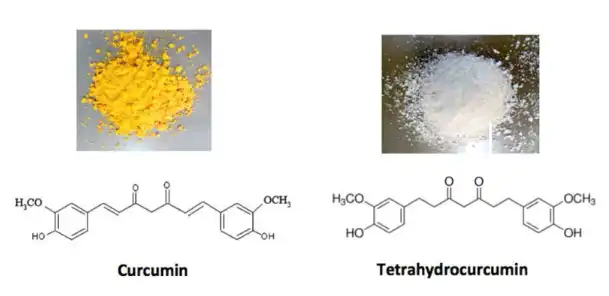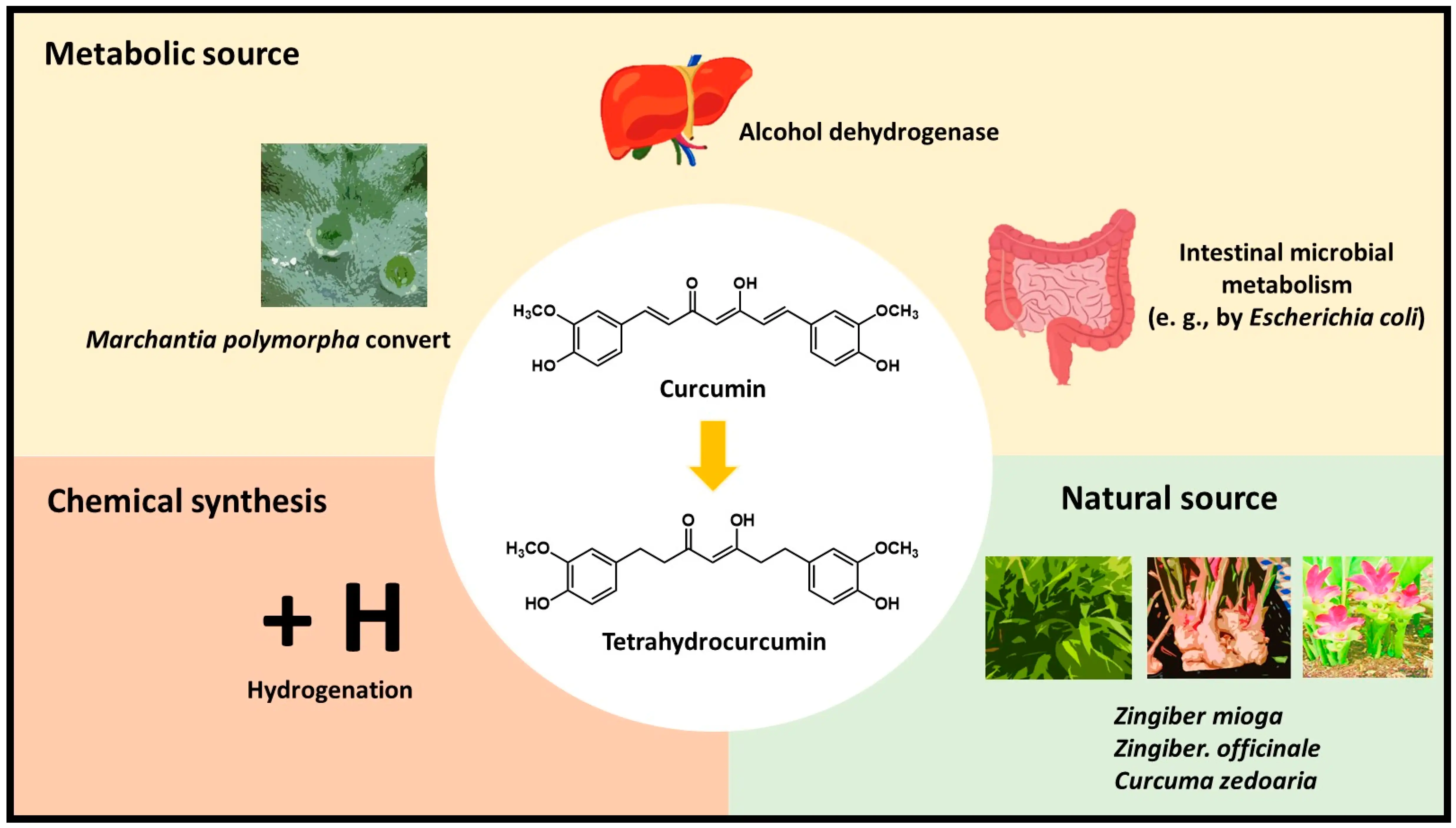Tetrahydrocurcumin Powder is a potent antioxidant compound derived from curcumin, the active ingredient in turmeric. This bioactive molecule has garnered significant attention in recent years due to its remarkable ability to support antioxidant activity in the body. Unlike its parent compound curcumin, THC is more easily absorbed and metabolized, making it a highly effective antioxidant supplement. In this blog post, we'll explore the mechanisms by which THC powder supports antioxidant activity and its potential benefits for overall health and well-being.

What are the differences between Tetrahydrocurcumin and Curcumin?
Tetrahydrocurcumin and curcumin are closely related compounds, but they have some distinct differences that contribute to their varying effects on antioxidant activity. Curcumin is the primary active compound found in turmeric, known for its vibrant yellow color and potent anti-inflammatory properties. THC, on the other hand, is a metabolite of curcumin that is formed when curcumin is broken down in the body.
The main differences between Tetrahydrocurcumin Powder and curcumin lie in their chemical structure, bioavailability, and antioxidant potential:
- Chemical structure: THC has a slightly different molecular structure compared to curcumin. It lacks the double bonds in its central seven-carbon chain, which makes it more stable and less prone to degradation.
- Bioavailability: One of the most significant advantages of THC over curcumin is its superior bioavailability. THC is more easily absorbed by the body and has a longer half-life, meaning it remains active in the system for a more extended period. This increased bioavailability allows THC to exert its antioxidant effects more efficiently.
- Antioxidant potential: While both compounds possess strong antioxidant properties, THC has been shown to have even greater antioxidant capacity than curcumin. This enhanced antioxidant activity is attributed to THC's ability to more effectively neutralize free radicals and reactive oxygen species (ROS) in the body.
- Color: Unlike curcumin, which has a bright yellow color, THC is white or off-white in appearance. This makes it more suitable for use in certain cosmetic and pharmaceutical applications where color is a concern.
- Stability: THC is more stable than curcumin, particularly in neutral to alkaline conditions. This increased stability contributes to its longer shelf life and makes it easier to incorporate into various formulations.
These differences make THC a promising alternative to curcumin, especially when it comes to supporting antioxidant activity in the body. The increased bioavailability and stability of THC allow for more efficient delivery of its antioxidant benefits, potentially leading to improved health outcomes.
How does Tetrahydrocurcumin powder neutralize free radicals?
Tetrahydrocurcumin powder's ability to neutralize free radicals is at the core of its antioxidant activity. Free radicals are unstable molecules that can cause oxidative stress and damage to cells, proteins, and DNA. This damage is associated with various health issues, including inflammation, aging, and chronic diseases. THC's potent antioxidant properties make it an effective tool in combating these harmful free radicals.
The process by which THC neutralizes free radicals involves several mechanisms:
- Electron donation: THC acts as an electron donor, providing electrons to unstable free radicals. This process stabilizes the free radicals, preventing them from causing further damage to cellular structures.
- Hydrogen atom transfer: THC can also neutralize free radicals through hydrogen atom transfer. In this mechanism, THC donates a hydrogen atom to the free radical, effectively neutralizing it and converting it into a stable molecule.
- Metal chelation: Some free radicals are generated through metal-catalyzed reactions. THC has metal-chelating properties, which means it can bind to metal ions, preventing them from participating in free radical-generating reactions.
- Lipid peroxidation inhibition: THC has been shown to inhibit lipid peroxidation, a process in which free radicals damage cell membranes. By preventing this oxidative damage, THC helps maintain cellular integrity and function.
- Antioxidant enzyme activation: In addition to directly neutralizing free radicals, THC can also enhance the body's natural antioxidant defenses by activating antioxidant enzymes such as superoxide dismutase, catalase, and glutathione peroxidase.
These mechanisms work synergistically to provide comprehensive protection against oxidative stress. By effectively neutralizing free radicals, THC powder helps maintain cellular health, reduce inflammation, and support overall well-being. The potent antioxidant activity of THC has been demonstrated in numerous studies, showing its potential to protect against oxidative damage in various tissues and organs.
Furthermore, THC's superior bioavailability compared to curcumin means that it can exert its antioxidant effects more efficiently throughout the body. This increased absorption and utilization allow THC to provide more consistent and long-lasting protection against free radical damage.
What are the potential health benefits of Tetrahydrocurcumin's antioxidant properties?
The potent antioxidant properties of Tetrahydrocurcumin Powder contribute to a wide range of potential health benefits. As research continues to explore the effects of this powerful compound, several areas of health improvement have been identified:
- Cardiovascular health: THC's antioxidant activity may help protect the heart and blood vessels from oxidative stress, potentially reducing the risk of cardiovascular diseases. Studies have shown that THC can help lower cholesterol levels, reduce inflammation in blood vessels, and improve overall heart function.
- Neuroprotection: The antioxidant properties of THC may offer protection against neurodegenerative diseases such as Alzheimer's and Parkinson's. By neutralizing free radicals in the brain, THC could help prevent oxidative damage to neural tissues and support cognitive function.
- Anti-aging effects: Oxidative stress is a major contributor to the aging process. THC's powerful antioxidant activity may help slow down cellular aging by protecting against DNA damage and promoting cellular repair mechanisms.
- Skin health: When applied topically or consumed orally, THC's antioxidant properties can benefit skin health. It may help protect against UV damage, reduce inflammation, and support collagen production, potentially leading to improved skin appearance and reduced signs of aging.
- Joint health: The anti-inflammatory and antioxidant effects of THC may contribute to improved joint health. By reducing oxidative stress and inflammation in joint tissues, THC could help alleviate symptoms associated with conditions like arthritis.
- Liver protection: Studies have suggested that THC's antioxidant properties may help protect the liver from oxidative damage, potentially supporting liver function and health.
- Cancer prevention: While more research is needed, preliminary studies have shown that THC's antioxidant and anti-inflammatory properties may have potential in cancer prevention and as an adjunct to cancer treatments.
- Digestive health: THC's antioxidant activity may help protect the digestive system from oxidative stress and inflammation, potentially supporting overall gut health and reducing the risk of digestive disorders.
- Immune system support: By reducing oxidative stress and inflammation, THC may help support a healthy immune system, potentially enhancing the body's natural defense mechanisms against infections and diseases.
- Metabolic health: Some studies suggest that THC's antioxidant properties may help improve insulin sensitivity and glucose metabolism, potentially benefiting individuals with diabetes or metabolic syndrome.
It's important to note that while these potential health benefits are promising, more research is needed to fully understand the extent of THC's effects on human health. As with any supplement, it's advisable to consult with a healthcare professional before incorporating THC powder into your health regimen.
In conclusion, Tetrahydrocurcumin powder's potent antioxidant activity offers a wide range of potential health benefits. Its ability to effectively neutralize free radicals, combined with its superior bioavailability compared to curcumin, makes it a promising supplement for supporting overall health and well-being. As research continues to uncover the full potential of this powerful compound, THC powder may become an increasingly valuable tool in the pursuit of optimal health and longevity.
If you are also interested in this product and want to know more product details, or want to know about other related products, please feel free to contact lea_slsbio@163.com,WhatsApp+86 13193326505.

References
- Aggarwal, B. B., & Harikumar, K. B. (2009). Potential therapeutic effects of curcumin, the anti-inflammatory agent, against neurodegenerative, cardiovascular, pulmonary, metabolic, autoimmune and neoplastic diseases. The international journal of biochemistry & cell biology, 41(1), 40-59.
- Okada, K., Wangpoengtrakul, C., Tanaka, T., Toyokuni, S., Uchida, K., & Osawa, T. (2001). Curcumin and especially tetrahydrocurcumin ameliorate oxidative stress-induced renal injury in mice. The Journal of nutrition, 131(8), 2090-2095.
- Murugan, P., & Pari, L. (2006). Antioxidant effect of tetrahydrocurcumin in streptozotocin–nicotinamide induced diabetic rats. Life sciences, 79(18), 1720-1728.
- Somparn, P., Phisalaphong, C., Nakornchai, S., Unchern, S., & Morales, N. P. (2007). Comparative antioxidant activities of curcumin and its demethoxy and hydrogenated derivatives. Biological and Pharmaceutical Bulletin, 30(1), 74-78.
- Nakmareong, S., Kukongviriyapan, U., Pakdeechote, P., Donpunha, W., Kukongviriyapan, V., Kongyingyoes, B., ... & Phisalaphong, C. (2011). Antioxidant and vascular protective effects of curcumin and tetrahydrocurcumin in rats with L-NAME-induced hypertension. Naunyn-Schmiedeberg's archives of pharmacology, 383(5), 519-529.
- Khopde, S. M., Priyadarsini, K. I., Guha, S. N., Satav, J. G., Venkatesan, P., & Rao, M. N. A. (2000). Inhibition of radiation-induced lipid peroxidation by tetrahydrocurcumin: possible mechanisms by pulse radiolysis. Bioscience, biotechnology, and biochemistry, 64(3), 503-509.
- Sangartit, W., Pakdeechote, P., Kukongviriyapan, V., Donpunha, W., Shibahara, S., & Kukongviriyapan, U. (2016). Tetrahydrocurcumin in combination with deferiprone attenuates hypertension, vascular dysfunction, baroreflex dysfunction, and oxidative stress in iron-overloaded mice. Vascular pharmacology, 87, 199-208.
- Yodkeeree, S., Chaiwangyen, W., Garbisa, S., & Limtrakul, P. (2009). Curcumin, demethoxycurcumin and bisdemethoxycurcumin differentially inhibit cancer cell invasion through the down-regulation of MMPs and uPA. The Journal of nutritional biochemistry, 20(2), 87-95.
- Murugan, P., & Pari, L. (2007). Influence of tetrahydrocurcumin on erythrocyte membrane bound enzymes and antioxidant status in experimental type 2 diabetic rats. Journal of ethnopharmacology, 113(3), 479-486.
- Pari, L., & Murugan, P. (2007). Tetrahydrocurcumin prevents brain lipid peroxidation in streptozotocin-induced diabetic rats. Journal of medicinal food, 10(2), 323-329.

